Great Lakes Cicada Page | home
Introducing the Cicada | Life Cycle | 1999 Brood V Account | My Journeys | Magicicada Galleries | Magicicada Gallery 2 | Magicicada Nymphs | Chimneys & Emergence Holes | Magicicada Emergence | Magicicada Emergence 2 | Magicicadas Feeding | Magicicada Mating | Magicicada Ovipositing | Eggs & Egg Damage | Cicada Mortality | Brood Maps | Tibicen Galleries | Tibicen Gallery 2 | Tibicen Nymphs | Tibicen Emergence | Tibicen Emergence 2 | Tibicen Feeding & Ovipositing | Okanagana Galleries | Field Guide | How to Find | Deterrence | Armed Robbery??? | My Story | About Me | Cicada Links | The Future
Eggs & Egg Damage
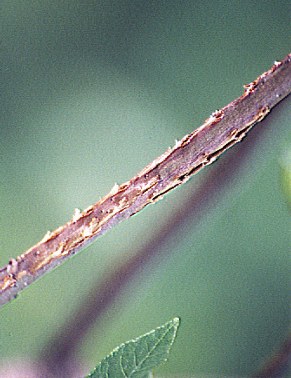
Magicicada Egg Damage
Female Magicicadas cut rows of slits in the branches of host trees where the eggs are deposited and concealed under the splintered wood.
Photo taken: 06/99
Findley State Park
Lorain County, Ohio
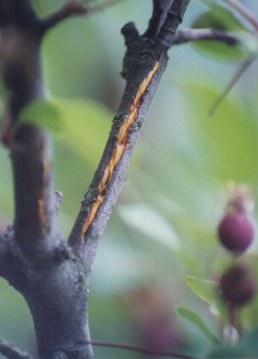
The eggs absorb nutrients from the wood which is why female Magicicadas select living twigs and branches to deposit their eggs.
After a couple of weeks, tiny red eye spots can be seen within each egg. It takes approximately 6 to 8 weeks before the eggs will be ready to hatch.
Photo taken: 06/99
Brecksville Reservation
Cuyahoga County, Ohio

If heavily oviposited, these branches become weak and break off easily by touch or by wind currents.
Photo taken: 06/99
Findley State Park
Lorain County, Ohio
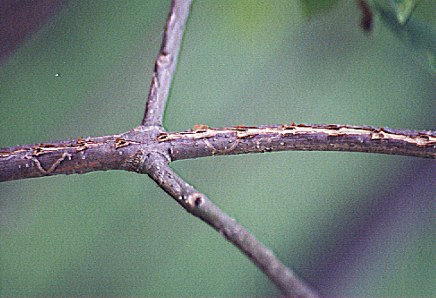
A close up of a heavily damaged twig loaded with cicada eggs.
Most twigs will heal... But the scars will most likely be permanent.
Photo taken: 06/99
Findley State Park
Lorain County, Ohio
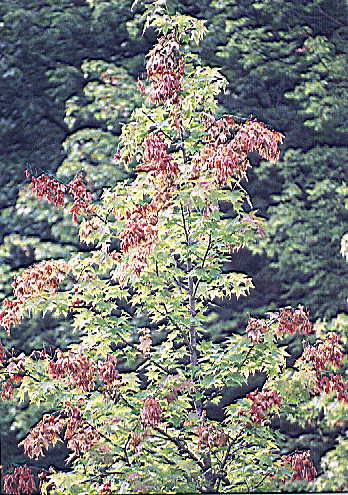
These damaged branches break and droop down. The leaves of these damaged branches later turn brown which creates what is commonly referred to as "Flagging." This name was given since these damaged branches resemble flags blowing in the wind.
Photo taken: 06/99
Findley State Park
Lorain County, Ohio
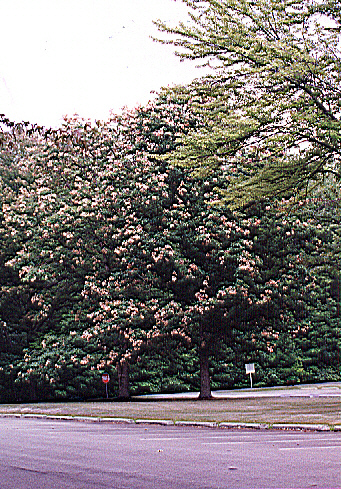
Cicadas oviposite in upper and lower branches. This tree displays a significant amount of "Flagging."
Photo taken: 06/99
Findley State Park
Lorain County, Ohio
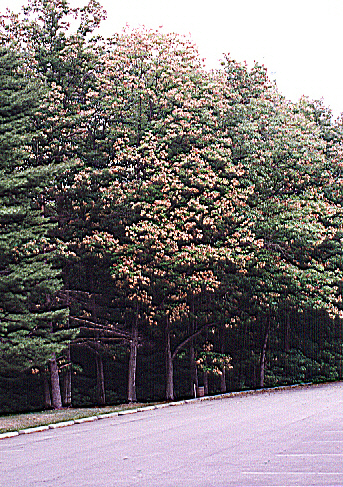
Here are a row of trees that reveal damage done by the female cicadas. Despite the unpleasant look, this flagging damage is actually a natural pruning process which helps eliminate weaker branches.
Photo taken: 06/99
Findley State Park
Lorain County, Ohio
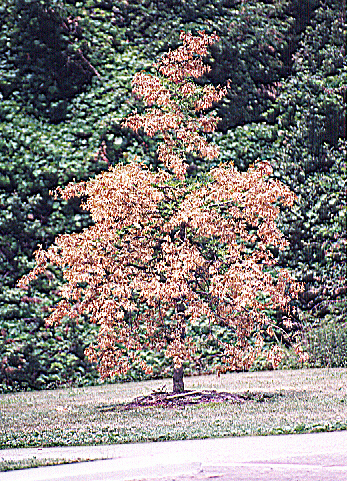
Younger trees and saplings are effected the most by ovipositing females. This young tree has suffered a large amount of egg laying damage and stands of risk of dying under these conditions. However, this tree did manage to survive the Brood V invasion.
Photo taken: 07/99
Indian Hollow Reservation
Lorain County, Ohio
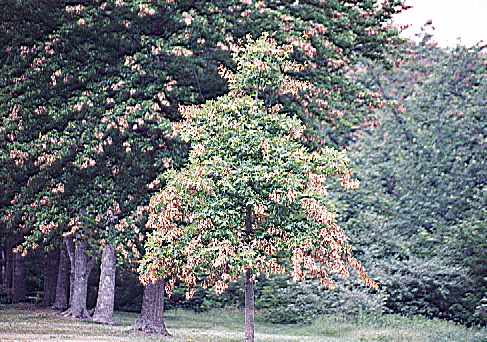
This picture displays both young and old trees with evidence of the Brood V emergence.
Photo taken: 06/99
Indian Hollow Reservation
Lorain County, Ohio
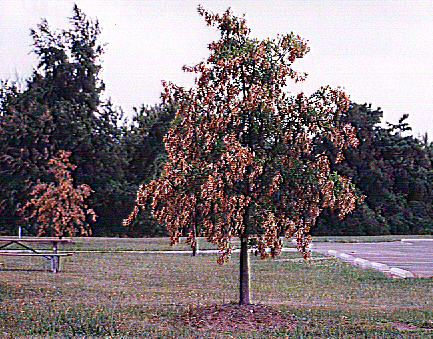 Here are a couple of more young trees that have suffered egg laying damage. Cicadas often select younger trees that will ensure the survival of the next generation.
Here are a couple of more young trees that have suffered egg laying damage. Cicadas often select younger trees that will ensure the survival of the next generation. For this reason, many people dislike Magicicadas. However, none of these trees died and can still be seen by visitors to the area. By inspecting the branches up close, one can see the egg scars left over from the 1999 Brood V emergence.
Photo taken: 07/99
Indian Hollow Reservation
Lorain County, Ohio